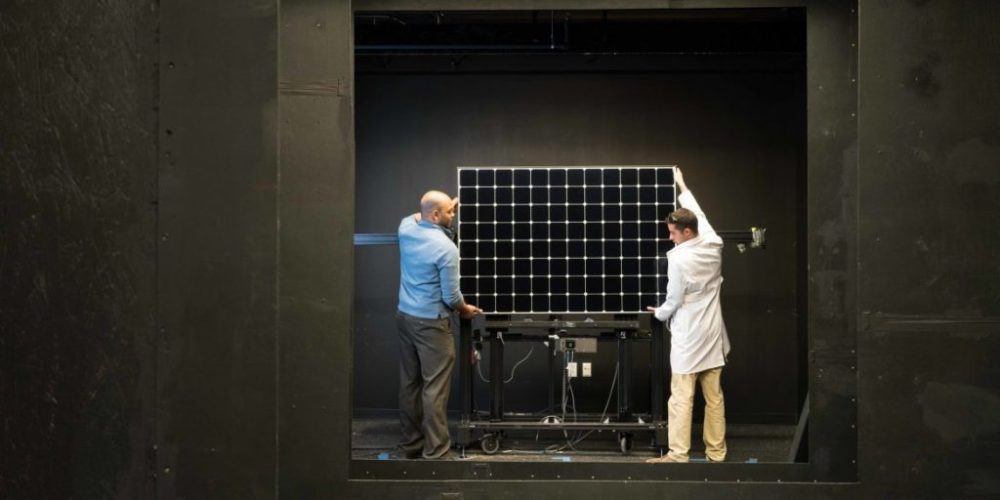From pv magazine USA
SunPower is the industry leader when it comes to solar module degradation. It has the lowest warranted degradation rate at 0.25% a year, and after its 25 year solar panel warranty lifetime the company projects that its PV modules will be at 92% of their original output. Additionally, 99 out of 100 solar modules are projected to be above 70% of their original output after a 40 year lifetime.
The Department of Energy's National Renewable Energy Lab (NREL), has aimed to better understand what the real degradation rate of a solar module is in their report Robust PV Degradation Methodology and Application.
NREL noted that many methods have been proposed for extracting the degradation rate from operational data of PV systems, but most of the published approaches are susceptible to bias due to inverter clipping, module soiling, temporary outages, seasonality, and sensor degradation. For instance, the below image shows sensor degradation/drift in the black and green, which would have suggested module degradation in the purple. However, when compared to the blue regularly calibrated sensors – a marked drift over 5 years at an annualized linear rate of 1%–2%/year becomes visible.

NREL looked at each of the variables, and tuned their model to account for and remove these variations from the data. NREL then compared this newly filtered field collected data with the many solar systems they the research group has had running for greater tan 10 years, and felt that the new, and they now propose considering this new analysis technique.
As part of this analysis, SunPower modules showed a field measured degradation rate of 0.2% per year – suggesting a bit greater greater than 92% productivity after 25 years with the 0.25% degradation warranty.
Recent research grants have set industry eyes on a 50-year lifetime for glass on glass solar modules, and with some power purchase agreements having a 25 year lifetime, with a 25 year option, that lifetime can be monetized. These goals aren't unattainable. We had Kyocera, back in 2011, showing off a 1991 installation which it says ran with a “near-constant” efficiency level. The company has another solar power plant, recently verified, that’s been running since 1984 in Japan.
The image credit was corrected to read Fraunhofer CSE, on 03.01.19. Previously, the credit falsely stated that the image was provided by NREL. We apologize for the mistake.
An image description was edited to better align with the research paper description.
This content is protected by copyright and may not be reused. If you want to cooperate with us and would like to reuse some of our content, please contact: editors@pv-magazine.com.



I disagree with this statement. I checked the article,
“but after filtering the more consistent blue solar production data comes out.”
The blue data show the comparison of reference cell vs. the pyranometer. It has nothing to do with the production data. Please edit this part as it sends out incorrect message.
And I do think you are correct, I incorrectly interpreted the chart…thank you for pointing it out.
Fair point. Nice catch.